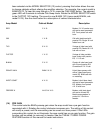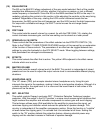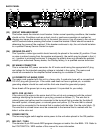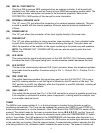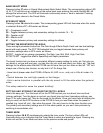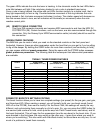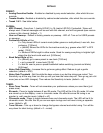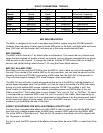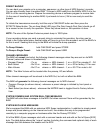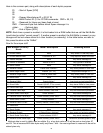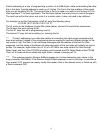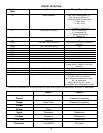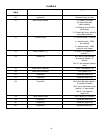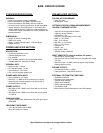
14
EFFECT PARAMETERS / TWEAKS
Effect Speed/Adj Depth Tweak 1 Tweak 2
Chorus Speed Depth Crossover Frequency
Flanger Speed Depth Delay Time Crossover Frequency
Phaser Speed Depth - -
Octave Dry Level Wet Level Tone -
Synth Sensitivity Mix Frequency Resonance
Fretless Sensitivity Mix Frequency Resonance
Funk Wah Sensitivity Mix Frequency Resonance
Distortion Pre Gain Post Gain Low Rolloff Dry Level
MIDI IMPLEMENTATION
The BAM
™
is designed to be an all-in-one bass amplification system using the PFC4B footswitch.
However, there are plenty of other uses for those MIDI jacks on the back, and that's what we'll cover
here. We'll start with the simpler stuff, and move on to the more complicated stuff later.
MIDI CHANNEL
The BAM
™
’s MIDI channel is 1 by default (after re-initialization). This means that any channel mes-
sages that are received on another channel are ignored, and any channel messages that are gener-
ated are sent on this channel. To change the channel, hold the STORE button down for at least a
second, and (while holding) select channel 1-16 using the Preset Matrix selector.
MIDI OUT AS A MIDI THRU
Most likely, you'll be using the PFC4B to drive the MIDI In, since it adds so much to the usability of
the amp. If you decide to link another BAM up for dual operation, you can have the second one be
slaved to the first one's PFC4B by connecting a MIDI cable from the first's Out to the second's In.
They will track program changes, EFX mode changes, other preset edits, etc.
The MIDI Out jack will echo virtually all commands that arrive at the MIDI In (with the exception of
certain Sysex messages meant for the BAM), so it can be used in the middle of a MIDI chain when
driving a rig from another MIDI source, instead of using the PFC4B. This is called a “soft” thru,
which means it is dependent upon the software (processing power and MIDI buffer) of the unit.
What’s a hard thru? That's when there is a jack labeled “Thru” and not “Out” or “Out/Thru.” It’s usual-
ly accompanied by a separate MIDI In and Out, and it’s usually in the middle. Most importantly, it's
directly driven from the In jack, so it is not dependant on the software to do the echoing work (which
could cause short delays in some cases). So if your other MIDI units are “3-jack” units, it is recom-
mended to put the BAM at the end of the chain.
PRESET SYNCHRONIZATION WITH AN EXTERNAL EFFECTS UNIT
You may have a programmable effects unit with a MIDI In that you want to use with the BAM. If you
want this unit to change presets when the BAM does, connect a MIDI cable from the BAM’s MIDI
Out to the MIDI In of the effects unit. Then the first 16 presets in the effects unit will be aligned with
the 16 presets in the BAM.
For this to work, the MIDI channel of the effects unit must either be set to OMNI, or match that of the
BAM.



